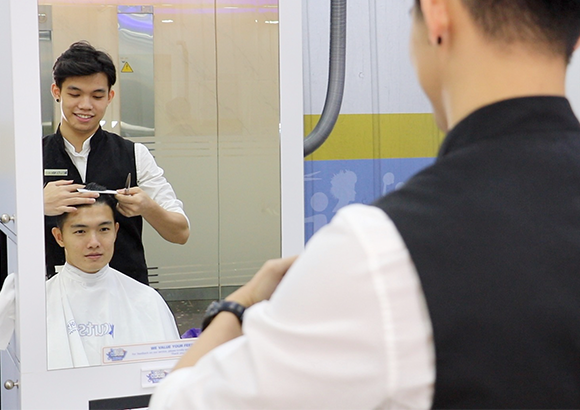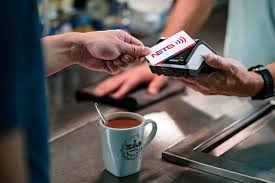Four Singapore business models the rest of the world should copy
I’ve been in Singapore for 10 weeks now – long enough to form an initial outsider’s impression of its corporate and consumer culture, but not to actually understand it. I’ve sampled goods and services from hawker markets to global banks, and even waded into a canine swimming pool, and can report that while Singapore might retain the trappings of a highly Westernised Asian city, it’s doing some things very differently.
Here are four businesses, with varying degrees of exclusivity to what locals call the Little Red Dot, that might just fly beyond these shores.
1. Korean haircuts
Unsurprisingly for a country with the longest working hours in the world, and where lunch is a serious sit-down affair rather than a chance to run errands, many Singaporeans don’t have time to queue at the barber’s, let alone go in for a fully fledged grooming regime. Little wonder kcuts has flourished by deconstructing the men’s haircut using the ethos of fast food: for a bargain $15 (about £8.50), booked via an enviably straightforward app, you take your place in a virtual queue and will get snipped and shaped in no more than 10 minutes, rarely waiting more than the same time for your turn in the chair.
It’s certainly no-frills – colouring and fading are off the menu, and don’t expect chit-chat about holidays or football scores – but the business has grown exponentially in its first 12 years and now has 77 outlets island-wide, branching out into a facials business for women and eyeing overseas expansion. And while the ‘k’ may stand for Korean, you won’t end up looking like a member of BTS – the name was chosen by its founders, three locals who met at business school, to tap into the trend for all things K-pop at the time, but they’re perfectly comfortable doing a short back and sides.

2. The Gen Z news brand
Legacy media brands the world over have grappled with how to get a new generation interested in their output at a time when younger audiences, while still generally interested in the news agenda, are content to read snippets on social media rather than routinely visiting a particular homepage. Singapore’s The New Paper has one of the most effective solutions I’ve seen – it’s an entire brand written by and for younger readers, co-opting the style and language of viral posts to create shareable, bite-sized content.
The New Paper began life in 1988 as a tabloid offshoot of establishment paper The Straits Times, but in recent years has pivoted to a digital-only model and an editorial diet of residential disputes, public transport incidents and hard crime, alongside local ephemera (to take a sample of just one recent homepage, a man who ate 36 dosas in 68 minutes and a street vendor whose loud music keeps locals awake). But cleverly, it also mixes in political stories from its parent brand, part of an attempt to avoid patronising its audience or assuming cat pictures are the only thing that flies with Gen Z.

3. Genuinely healthy salad
SaladStop! isn’t the only healthy food chain in Singapore, or the only one with a confusing name (Mr Bean has nothing to do with Rowan Atkinson’s comedic creation, though it does serve an excellent soy milk ice cream). But its stratospheric growth is testament to its singular vision – founded by a father-and-son team in 2009, it’s now a B-Corp operating in six countries, has an eye on the European market and has raised more than $18m in venture funding.
It’s done so without complicating its simple premise – a base of leaves, five vegetables, one protein and a dressing – or compromising the ruthless efficiency of its operations. You can have a perfectly tailored salad in under three minutes, chopped and served in a recyclable bowl, having paid via QR code while it’s assembled. And while there are salad shops all over Europe and the US, what makes SaladStop! different is its refusal to allow anything you could deem even vaguely unhealthy onto its menu. If you want bacon on top of your kale, you’re in the wrong place.
4. A joined-up, cashless payment system
Much has been written about Singapore’s digital efficiency, exemplified by Singpass – an identity system which enables all citizens and long-term residents to access government services, open bank accounts and have broadband installed without constantly verifying who they are or filling in multiple forms. But NETS is an even more integral part of island life: a joint venture between Singapore’s three biggest banks, it enables cashless payments at everything from department stores to hawker centres but also acts as a prepaid card for the entire transport system – not just buses and MRTs but satellite-linked devices on car dashboards that enable instant payment of road tolls and car park charges.
It’s all possible because private sector innovation and government infrastructure in Singapore are entwined in a way most other countries can only dream of. The state relies on businesses to enable its services rather than developing its own, separate innovations. Banks know they gain legitimacy from the patronage of the state. To critics, it is a form of surveillance: it means where you go and what you spend are constantly, fully accessible to government entities. But you can’t deny that from a consumer standpoint, it works seamlessly.

Post a comment